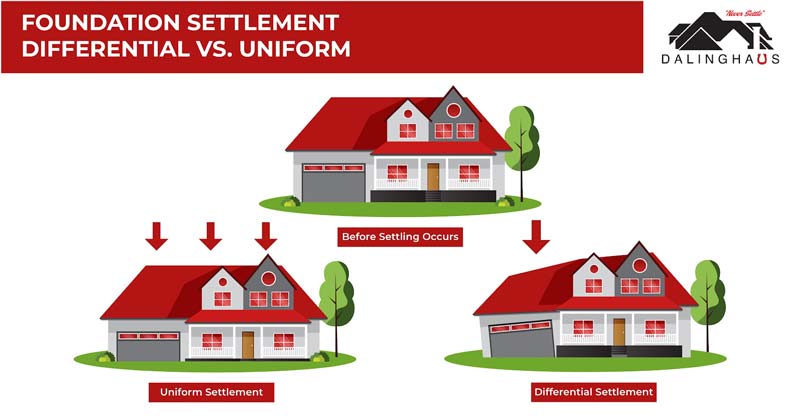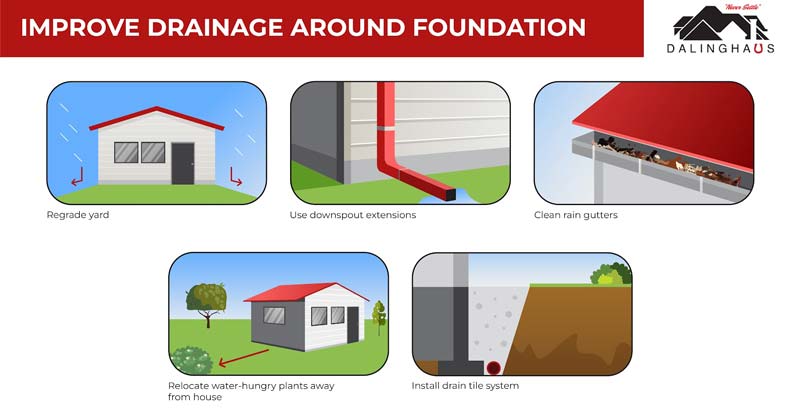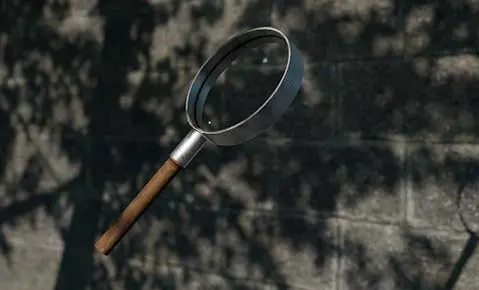Are you looking for information about concrete crack repair? If so, you’ll want to stick around because we have valuable information you need to know before you begin any concrete crack repair jobs.
In this article, we’re going to go over why concrete cracks, the difference between structural and non-structural concrete cracks, concrete crack repair, and more.
First Things First: Why Did The Concrete Crack?
Instead of jumping straight into fixing that concrete crack, take the time to determine why the crack is there. Without understanding what causes the crack, you may be putting yourself at risk for more costly damage down the road – and no one wants that.
A myriad of factors could cause concrete cracks to form. For instance, perhaps inadequate curing or a subpar water-to-cement ratio caused a shrinkage crack. Even though shrinkage cracks are unsightly, they’re pretty common and nothing to worry about.
However, not all concrete cracks are harmless shrinkage cracks. Some are caused by unstable soil. These cracks are serious, and the underlying problem that caused the crack needs to be addressed. If you fix these cracks without considering the root problem, your “repair” will be temporary, and the situation will worsen.
Structural Vs. Non-Structural Concrete Cracks
So, as you now know, not all concrete cracks are created equal. As we’ve hinted above, there are two main types of concrete cracks: structural and non-structural. Let’s take a look at each of them.
Structural concrete cracks
Structural cracks can be quite a headache, as they jeopardize a building’s structural integrity. Structural cracks in concrete are often caused by differential settlement. This is when a building settles into the soil unevenly. Differential settlement puts a lot of stress on a foundation and can cause cracks in a concrete garage floor, for example.

If you have a basement foundation (uncommon in our neck of the woods), a common cause of structural cracks in a poured concrete or concrete block foundation wall is hydrostatic pressure. Hydrostatic pressure builds up outside the foundation walls when excess moisture in the soil can’t drain off. In other words, hydrostatic pressure builds up because of poor drainage. The pressure pushes against the foundation walls, and if it’s not relieved, it will eventually cause the wall to bow inward and even crack. Concrete block walls are more susceptible to damage caused by hydrostatic pressure.
Non-structural concrete cracks
Non-structural cracks in concrete are much less problematic. Yes, they’re unsightly, but they’re pretty common and typically don’t impact the building’s structural integrity. The most common cause of non-structural cracks in concrete is shrinkage during the concrete curing process.
So, now that you know the difference between structural and non-structural cracks, let’s look at two common scenarios: concrete wall cracks and garage floor cracks.
For more information, see Are There Normal Foundation Cracks?
Cracks in a Concrete Wall: Was The Crack Caused By Shrinkage or Hydrostatic Pressure?
As we’ve just noted, there are two primary culprits of cracks in a concrete wall: shrinkage and hydrostatic pressure. (There are other reasons for structural cracks in a concrete foundation wall, but hydrostatic pressure is very common.)
Although generally harmless, shrinkage cracks can allow water to seep through the foundation wall and into a crawl space (or basement if you live in a part of the country where basements are common). Therefore, they should be sealed. Usually, this is done with epoxy or polyurethane foam.
However, if the crack was caused by hydrostatic pressure, sealing the crack with epoxy or polyurethane foam isn’t going to do anything. The correct repair solution, in this case, is to fix the drainage problem and then repair the crack using wall anchors or carbon fiber straps to stabilize the wall and stop further inward movement.
Concrete Garage Floor Cracks: Was The Crack Caused By Shrinkage or Differential Settlement?
When dealing with things like garage floor cracks, you need to figure out the same thing: Was the crack caused by shrinkage or differential settlement? As we noted above, a crack caused by shrinkage can be sealed using epoxy or polyurethane foam. However, if the crack in the concrete garage floor was caused by differential settlement, that calls for an entirely different repair solution, usually underpinning.
If you seal a crack caused by differential settlement thinking you’ve fixed the problem, you’re in for a big, nasty surprise later as the situation worsens. Differential settlement can cause serious foundation damage and needs to be repaired by an experienced foundation repair contractor immediately.
You Can Prevent Concrete Cracks By Improving Drainage Around The Foundation
What if we told you that preventing concrete cracks is as simple as improving the drainage around your foundation? It’s true. Most foundation problems, including cracks in concrete, are caused by excess moisture in the ground around the foundation. Therefore, you can go a long way toward preventing concrete cracks by getting groundwater under control. Here are some ways to do that:
- If necessary, regrade the yard around your home so that it slopes away from the foundation. This will keep water from draining toward the foundation.
- Use downspout extensions to release runoff at least 4 feet from the foundation.
- Consider relocating any water-hungry vegetation planted next to the house. Ideally, there shouldn’t be any flowers or shrubs planted next to the house.
- Keep your gutters debris-free. Clogged gutters can cause water to spill over the side of your home and soak the ground around the foundation.
- Install a drain tile system, a gold standard for foundation waterproofing. A drain tile system doesn’t merely put up a barrier to keep water out; it prevents it from building up in the soil. There are two types of drain tile systems, exterior and interior. Both can be installed in existing foundations.

In summary, when it comes to concrete crack repair, understanding the cause of the crack is key if you want to select the correct repair solution. Failure to consider the cause could lead to foundation damage and a much more expensive repair later.
If you’re looking for concrete crack repair, contact us today to schedule a free evaluation and receive a repair estimate. We serve Southern California, Arizona, and Nevada.






